 *
*
This city offers a plethora of choices of talented artists to interview. Janeann Dill, caught my eye and interest, so I managed to catch up with her for an (online) interview.
Doug Holder: Can you tell us about your Somerville experience?
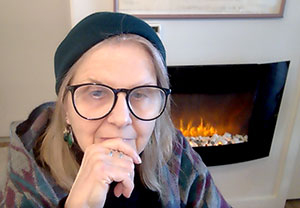
Janeann Dill
Janeann Dill: After relocating to the Boston area in 2011, I made a conscious choice to establish my studio in Somerville. When attending an ICA retrospective exhibition and memorial for an important experimental animation artist, Karen Aqua. As an experimental animation historian, I had been well aware of her artwork for years. I understood how influential and compelling her art films were for the City of Somerville as well as internationally. At this exhibition, I had the pleasure to meet and speak extensively with Karen’s husband, Ken Field. Ken Field is also an internationally recognized and compelling jazz artist, musician, and composer. Longer story short, with Ken’s generous help and suggestions, I was led to my artist studio at Miller Street in Somerville. I have worked in my studio and resided in Somerville for some seven years now and still believe that my decisions to live here were good ones! To name only one example among the many opportunities Somerville offers its artists, the Somerville Arts Council is an impressive arts organization with numerous successful programs for its artists and for Somerville’s citizens at-large. https://www.janeanndill-artist.com/somervilleartscouncil.
DH: You are a painter and filmmaker. Which came first? And do they inform each other?
JD: I love this question! Thank you for asking. My first long-lasting professional career was as a painter of works on paper and paintings on canvas. Experimental animation came into my view years later when I realized that I wanted my paintings “to move in time” when an Artist In Residence at the American Center In Paris. Little had I realized the profound conceptual influence the animated film Fantasia would have on my paintings prior to living in Paris. I was, however, quite aware of the influences of music, poetic literature, and choreography on my paintings.
DH: You are a conceptual artist. You deal with the “action of thought.” Can you explain this?
JD: I teach my students in higher education how vital it is to at least try to understand their singular creative process as a disciplinary strategy in addition to being a medium or craft. I teach the importance of understanding what a concept is, and how to have one.
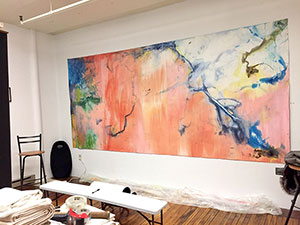 A concept is an idea. An idea comes into view through research. When research merges with intuition, creative intelligence informs and balances an artist’s output. In other words, one must take action when a thought arrives to reveal itself to an artist. It is a fleeting moment and comes quietly. Thought is ethereal. The act of hearing/seeing/sensing thought leads to another action, i.e., research. Research is meant to discern the impulse for idea. This takes work. Research is are acts of investigation to clarify an idea. For example, making a film is an arduous and laborious pursuit. Keeping a North Star of Idea in view during a lengthy creative process is essential to “remembering” why and how the artist decided to commit to this particular work of art in the first place. This is true for composing music, choreography, experiments in science, writing poetry, theatrical performances, and any visual works of art. I hope this is helpful …
A concept is an idea. An idea comes into view through research. When research merges with intuition, creative intelligence informs and balances an artist’s output. In other words, one must take action when a thought arrives to reveal itself to an artist. It is a fleeting moment and comes quietly. Thought is ethereal. The act of hearing/seeing/sensing thought leads to another action, i.e., research. Research is meant to discern the impulse for idea. This takes work. Research is are acts of investigation to clarify an idea. For example, making a film is an arduous and laborious pursuit. Keeping a North Star of Idea in view during a lengthy creative process is essential to “remembering” why and how the artist decided to commit to this particular work of art in the first place. This is true for composing music, choreography, experiments in science, writing poetry, theatrical performances, and any visual works of art. I hope this is helpful …
DH: You directed an award-winning documentary about the noted experimental filmmaker Jules Engel. Can you talk a bit about his work and your relationship to him?
JD: I am the Authorized Biographer of Jules Engel (1909 – 2003). The biographical components yet to be distributed are a feature cinematic essay film (documentary) and book. The short film An Artist for All Seasons is in many ways a seven-minute introduction to the enormous and largely unknown art historical legacy of Engel and his art students. A consummate arts educator and mentor to four decades of artist-students, Engel was the Founding Director of the first animation program in America to award a higher education degree in Animation, California Institute of the Arts (CalArts). As one of his students and Engel as my Mentor at CalArts, Jules Engel’s teachings are not only visible and tangible in Los Angeles, his far-reaching influences are evidenced in New England as well. http://www.Jules-Engel.com.
DH: I read he was also a poet.
JD: Jules Engel approached his experimental films and animations as a form of art founded on the principles of timing, rhythm, and personal expression. In much the same way, Engel’s poems are extensions of capturing a gesture of sound and motion in words.
DH: Looking at your work on canvas it seems you use an orgasm of vivid colors–and they seem to project a certain energy–like the formation of a distant galaxy.
JD: I am blushing! I suppose remnants of my Southern upbringing are responding! Hahaha
I’ve never framed my paintings as ‘orgasms’ of color; in this same way, I’ve never considered the Big Bang an orgasmic event of our universe. That said, I understand how my paintings can be described in this way. I’m not offended by the comment. I did wonder, however, if this description would occur if these paintings had been created by a male artist? I ask out of curiosity. Do you think of the formation of a distant galaxy as an orgasm of color?
The formation of galaxies has been described to me by an astrophysicist to whom I showed my work early in his career and mine as “a kind-of colorful soup.” I am, indeed, creating an animated short film that involves the combining of NASA images (Harvard website) and my original images in which I imagined what is on the other side of the sky. This series of paintings were created in the South of France prior to the launching of the Hubble Telescope for deep space exploration. These pre-Hubble works may be viewed virtually on my website: https://www.janeanndill-artist.com/creation-of-a-universe-project.
DH: Is it hard painting intangible things rather than, let’s say, having a bowl of fruit in front of you? You must be very intuitive.
JD: As mentioned, my view is that the intuitive is informed by intelligence, i.e., research! I teach a philosophical approach that is grounded in the discipline of an actual creative process … after years of experience (or no experience at all) the challenge for any artist, young or old, is to remain committed to seeking new fields of inquiry (for themselves) when blockages show up. I can say with certainty, blockages or plateaus or detours and distractions will present themselves to the creative process. In terms of external or internal stimuli for an artist, the distinctions of painting a bowl of fruit in front of me and intangible evidence are both a kind of grappling with the blank canvas, or the piece of white paper in front of a poet. One learns to “kill the white” (canvas or paper) with differing strategies attached to outcomes. Idea is intangible but a bowl of fruit is not just a bowl of fruit. Not even in Photorealist art works. Lighting, placement, and choice of spatial relationships all exemplify the grappling of an idea. Skillful execution imposes a demand whether or not the object is seen in actuality or in the mind’s eye.
DH: Why should people view your art?
JD: Why not? My paintings offer a sense of the mysterious and my experimental films offer a sense of inquiry and curiosity of the “in-between” of rhythm, timing, and pacing. Both challenge prior assumptions and evoke the viewer into the presence of the now – this is not something I consciously intended when emerging as a young artist nor do I consciously intend it now as a mature artist. These are simply responses as the art work’s first viewer.
The text, philosophies, information and defining descriptions written, composed and authored by © Janeann Dill are reserved rights. Citation and written permission directly from Janeann Dill is required to publish beyond this one-time use for online and print publication granted to Doug Holder and the Somerville Times.



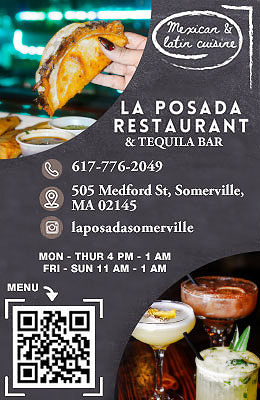




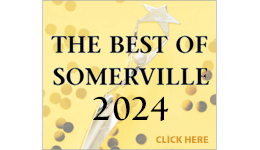




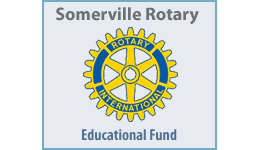
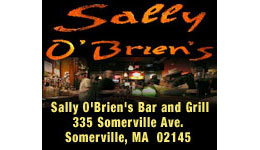

Reader Comments